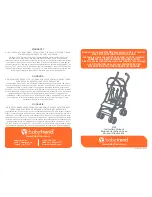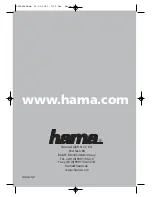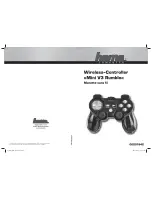
DL250–1 CPU Features
The DL250–1 replaces the DL250 CPU. It offers all the DL240 features, plus more program
instructions and a built–in Remote I/O Master port. It offers all the features of the DL250
CPU with the addition of supporting Local expansion I/O. It has a maximum of 14.8K of
program memory comprised of 7.6K of ladder memory and 7.2K of V-memory (data
registers). It supports a maximum of 256 points of local I/O and a maximum of 768 I/O
points (max. of two local expansion bases). In addition, port 2 supports up to 2048 points if
you use the DL250–1 as a Remote master. It includes an internal RISC–based microprocessor
for greater processing power. The DL250–1 has 240 instructions. The instructions are in
addition to the DL240 instruction set which include drum timers, a print function, floating
point math, PID loop control for 4 loops and the Intelligent Box (IBox) instructions.
The DL250–1 has a total of two built–in communications ports. The top port is identical to
the top port of the DL240, with the exception of the
Direct
Net slave feature. The bottom
port is a 15–pin RS-232/RS-422 port. It will interface with
Direct
SOFT and operator
interfaces, and provides
Direct
Net and Modbus RTU Master/Slave connections.
DL260 CPU Features
The DL260 offers all the DL250–1 features, plus ASCII IN/OUT and expanded Modbus
instructions. It also supports up to 1280 local I/O points by using up to four local expansion
bases. It has a maximum of 30.4K of program memory comprised of 15.8K of ladder
memory (saved on flash memory) and 14.6K of V-memory (data registers). It also includes an
internal RISC–based microprocessor for greater processing power. The DL260 has 297
instructions. In addition to those in the DL250–1 instruction set, the DL260 instruction set
includes table instructions, trigonometric instructions and support for 16 PID loops.
The DL260 has a total of two built–in communications ports. The top port is identical to the
top port of the DL250–1. The bottom port is a 15–pin RS-232/RS-422/RS-485 port. It will
interface with
Direct
SOFT (version 4.0 or later), operator interfaces, and provides
Direct
Net,
Modbus RTU Master/Slave connections. Port 2 also supports ASCII IN/OUT instructions.
DL205 User Manual, 4th Edition, Rev. B
3–3
Chapter 3: CPU Specifications and Operations
1
2
3
4
5
6
7
8
9
10
11
12
13
14
A
B
C
D
















































